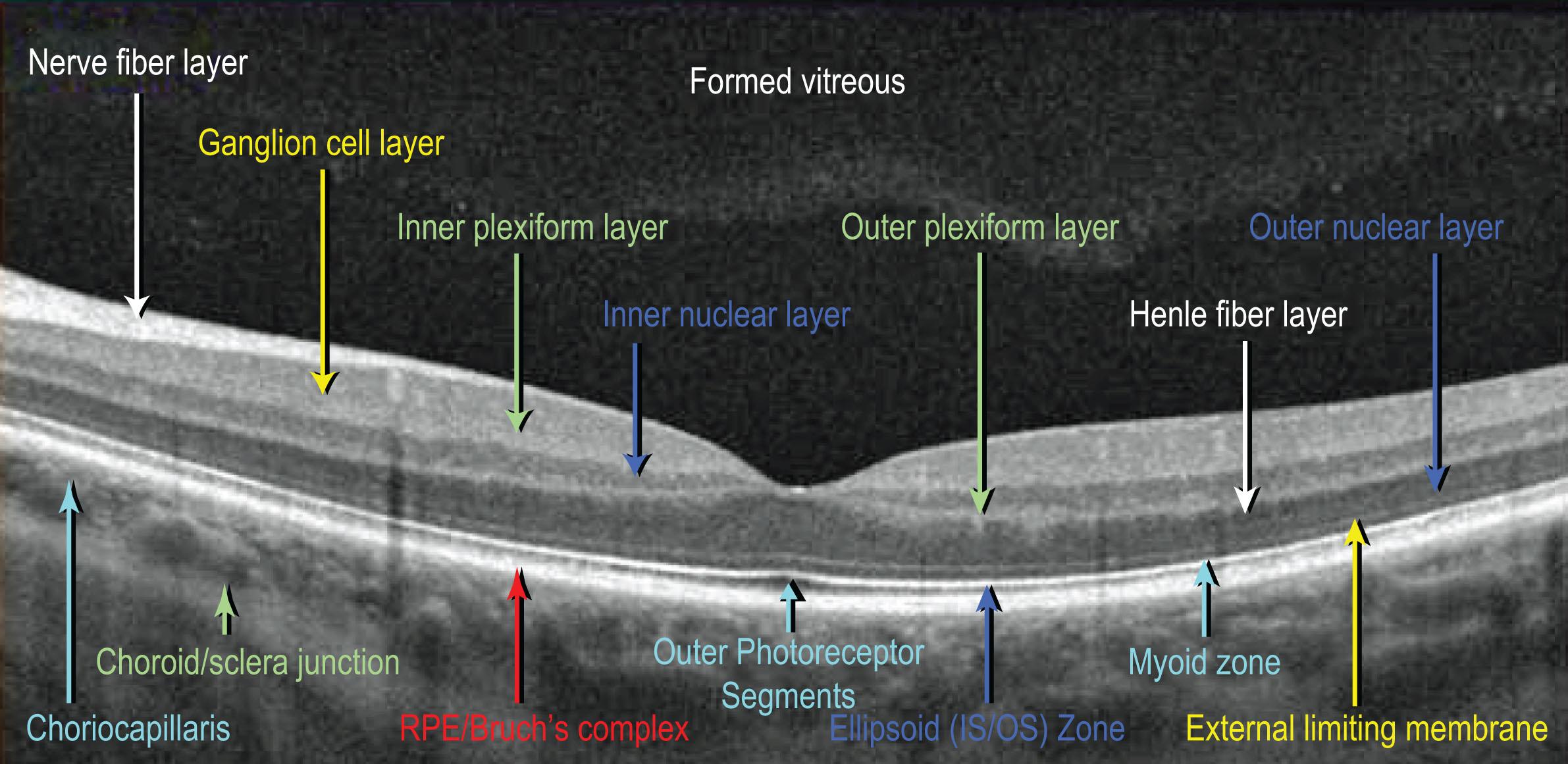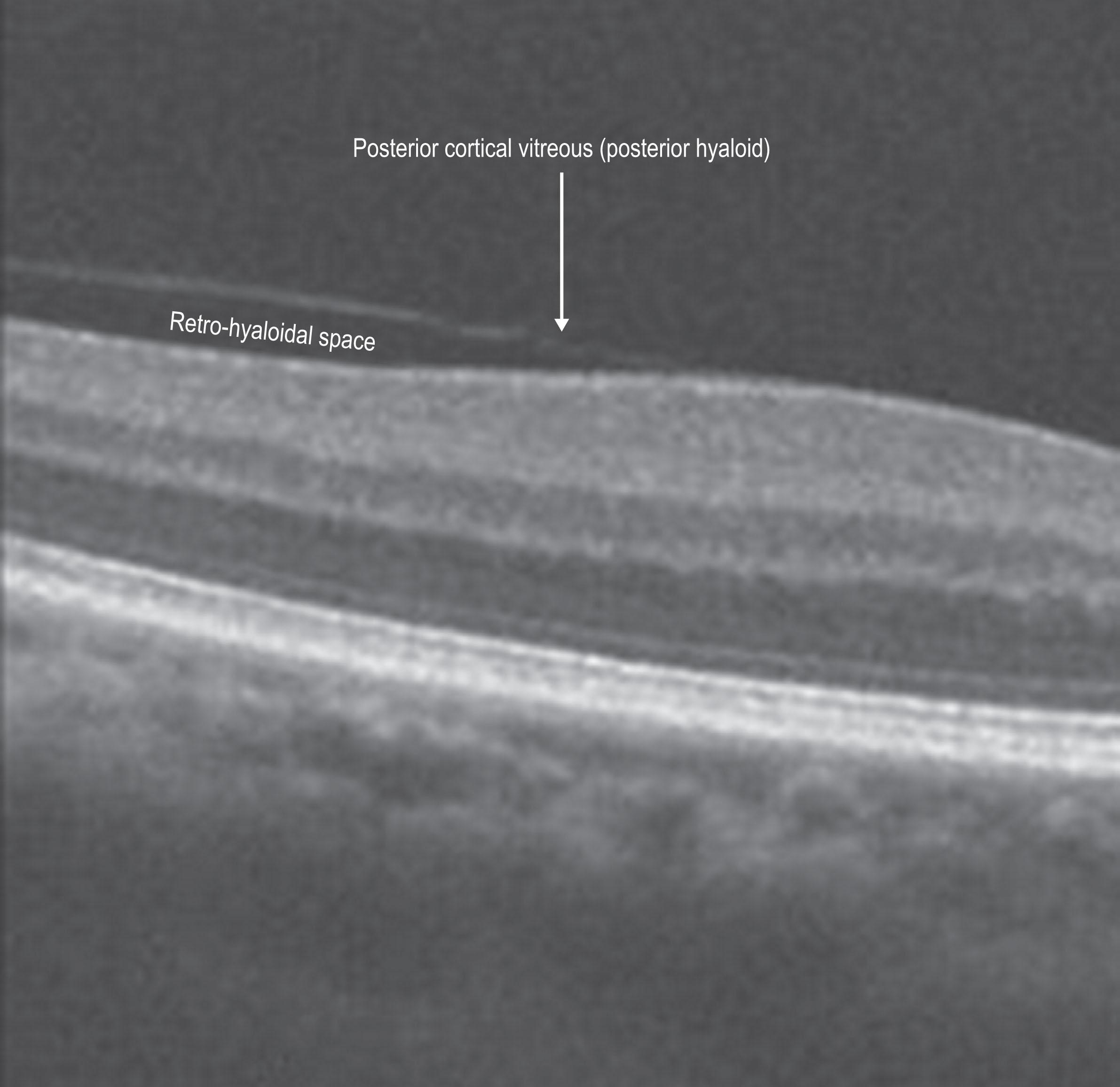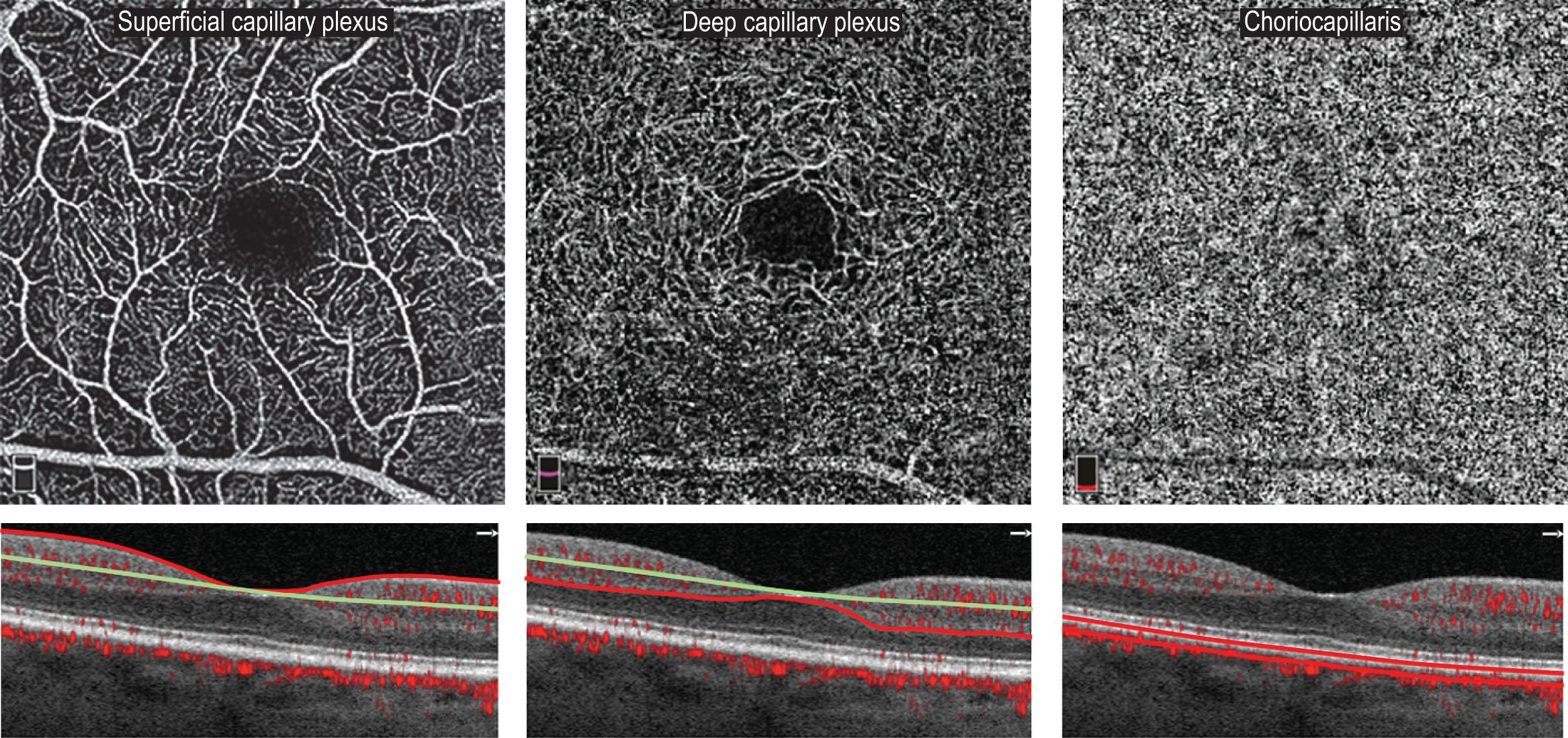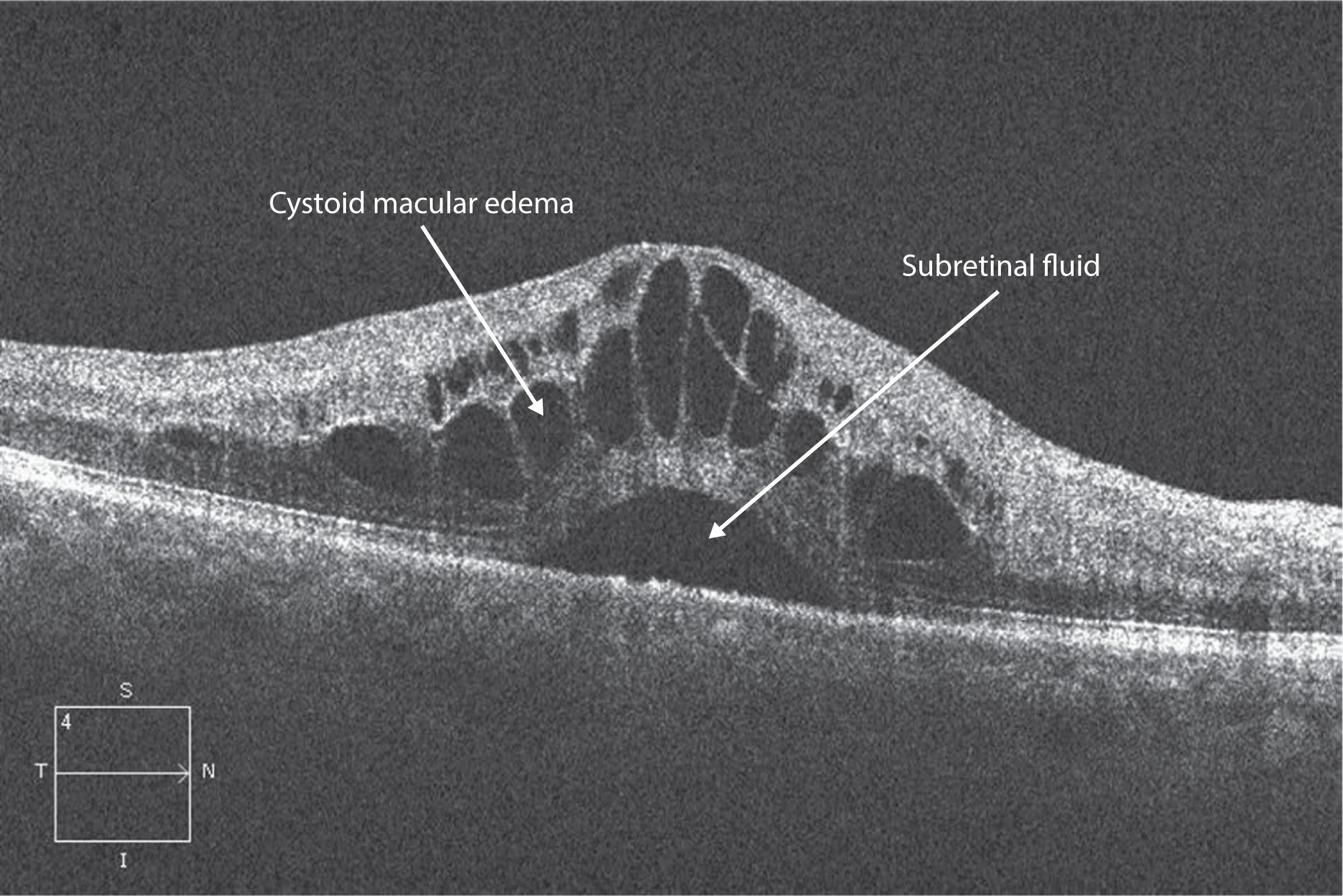Physical Address
304 North Cardinal St.
Dorchester Center, MA 02124
Commercially available spectral domain (SD-OCT) scanners have an Axial Resolution of between 4 µm and 7 µm and a transverse resolution of approximately 15 µm. Swept source (SS-OCT) devices, on the other hand, have an axial resolution between 6.3 µm and 8 µm and a transverse resolution of 20 µm. This high resolution allows for exquisite viewing of the retinal detail. Due to the limited penetration of light beyond the pigmented retinal pigment epithelium (RPE) and the drop-off of the OCT signal with depth (also called sensitivity roll-off), the image at the level of the choroid has a lower resolution. Swept source technology provides less sensitivity roll off and therefore can image the choroid better than SD-OCT. The layers of the normal retina are labeled in Figure 4.1.1 .

Some additional vitreous features are demonstrated in a normal OCT scan in Figure 4.1.2 :
Posterior cortical vitreous (posterior hyaloid)
Retro-hyaloidal space

OCT angiography (OCTA) helps visualize the distinct layers of capillary beds in the retina. The superficial capillary plexus and deep capillary plexus are derived from the retinal circulation and nourish the inner two-thirds of the retina while the choriocapillaris is part of the choroidal circulation and helps supply the outer retina ( Fig. 4.1.3 ).

Discrete hyporeflective spaces are noticed primarily in the outer retina, but usually span multiple layers ( Fig. 4.1.4 ).

The differential diagnosis includes:
Diabetic macular edema
Branch retinal vein obstruction
Central retinal vein obstruction
Retinal telangiectasias (e.g., Coat’s disease, macular telangiectasia)
Retinitis pigmentosa
Uveitis/retinal vasculitis
Post surgery
Nicotinic acid maculopathy
Vitreomacular disorders (vitreomacular traction, epiretinal membrane)
Chronic subretinal fluid (e.g., retinal detachment, choroidal neovascular membrane, central serous chorioretinopathy)
Idiopathic
Become a Clinical Tree membership for Full access and enjoy Unlimited articles
If you are a member. Log in here